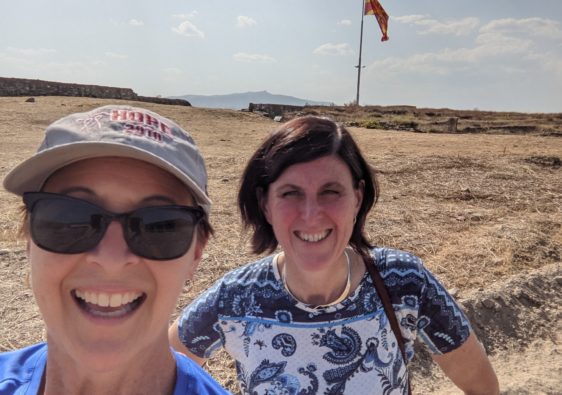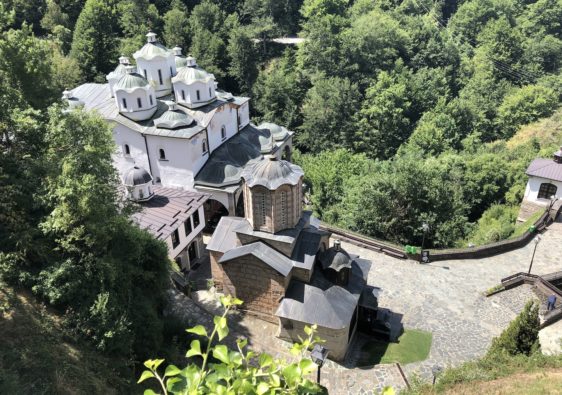We stayed at the JW Marriott Bucharest Grand Hotel [on points] which was beautiful and amazing. It was near the Palace of Parliament. To be honest, I was floored by Bucharest’s scale. Everything was bigger and grander than I expected. The scale of the city was off the charts, which had been part of Ceausescu’s vision [or the manifestation of his megalomania]. He wanted the Palace of Parliament to be the biggest administration building in the world, which he accomplished. The Cathedral Mantuirii Neamuluij, or National Cathedral, was similarly outsized [more on both below]. Our hotel room window looked out over the Cathedral, and the scale – I just can’t convey just how enormous everything was.
Because our hotel was by the Palace of Parliament, and because the city was so large, it was a haul to get to some of the tourist attractions and into the old town [Lipscani district] where the restaurants that were recommended were. We Uber’ed. First stop was the old town area for a great tapas restaurant Trattoria Pane e Vino, and then a walk through the district.
The next day we had two main sites we wanted to visit, as well as seeing as much of the rest of the city as we could:
- Ceausescu’s mansion. Ceausescu was a dictator from 1967 to 1989, until his overthrow and execution. He grew up a peasant, and made his mansion one of the most opulent imaginable. A few things that stuck out to me:
- a painting celebrating a “worker” in a gold frame.
- His bathroom was gold mosaic.
- He had a swimming pool and room covered in over 1,000,000 mosaic tiles, which was created by two sisters over four years. There were mosaics, mosaics, mosaics everywhere.
- He had presents from many of the then-world leaders such as Charles de Gaulle
- Visitors had to cover their shoes with little blue booties so as not to damage the mansion






- Dimitri Gusti National Village Museum– Example villages from around the Romanian countryside which have been preserved and transported into a park. Over 200 buildings, from the 18th and 19th centuries. The juxtaposition from the Ceausescu mansion to the homes where real Romanians lived was mind-warping. Some of the houses looked like log cabins from the American West, some had been dug into the ground with a shallower house over the top. There were also windmills and churches. My favorite part were the fences that had been woven together with small branches, in intricate patterns.




- We also saw:
- Palace of Parliament – This is the largest administration building in the world. It was part of Ceausescu’s grandiose vision to make Bucharest and Romania great. It contains offices and living quarters and still has parts of it that are vacant. We didn’t go in, but driving [and walking past it] – it really was tremendous. It is outsized – and the images that you see in Tripadvisor or other sites just can’t show the scale.
- Cathedral Mantuirii Neamului [Cathedral of the Salvation of the Nation, or National Cathedral]. The cathedral was still being build while we were there – but it was visible from our hotel windows. The cathedral is built on the same outsized scale as the Palace of Parliament. There have been mixed reviews of the cathedral, with some saying it’s a point of national pride, and some saying that it’s a huge investment when there are other greater needs in the country. Regardless, it is enormous – eye-catching and something you can’t miss if you’re in Bucharest, even if you try.
- Old Town [Lipscani] – Pedestrian zone, with shops, cafes.



